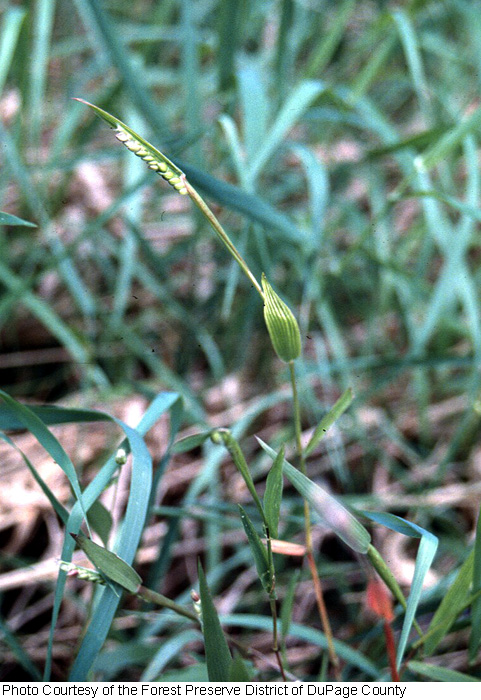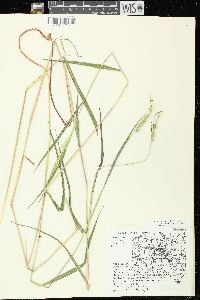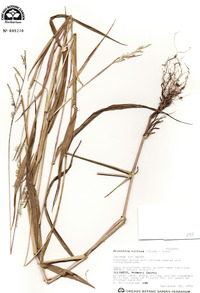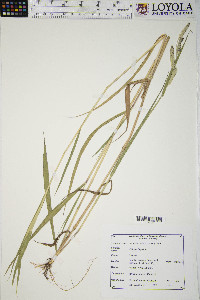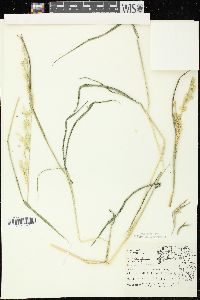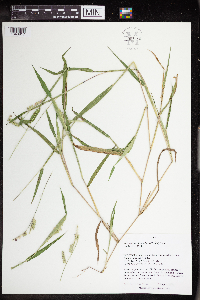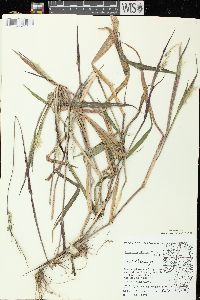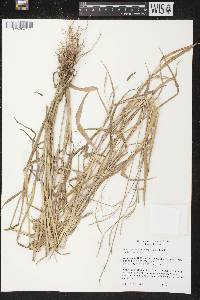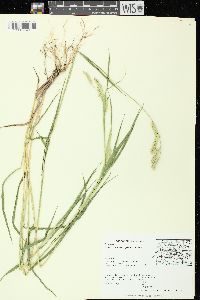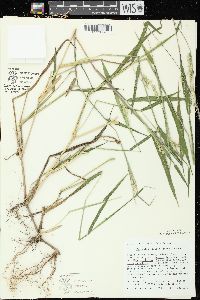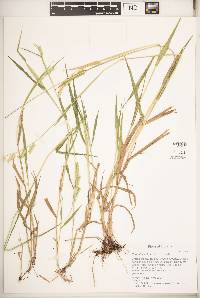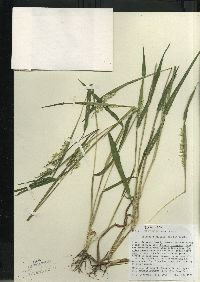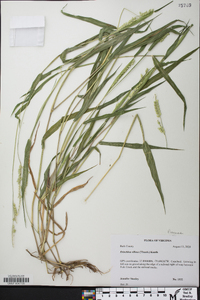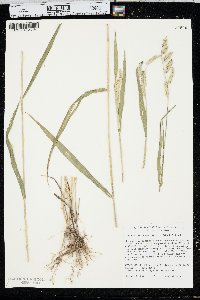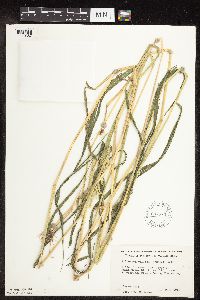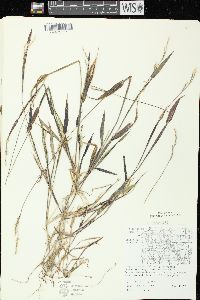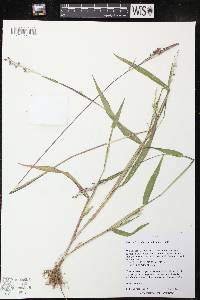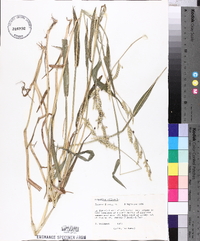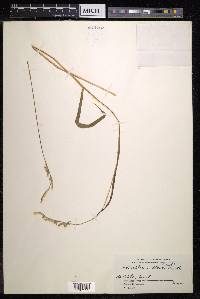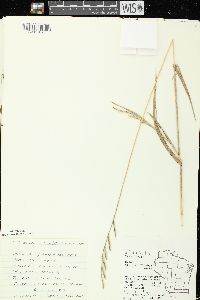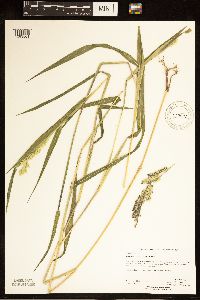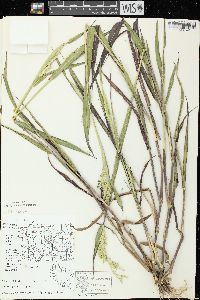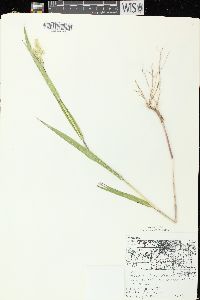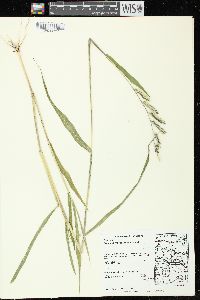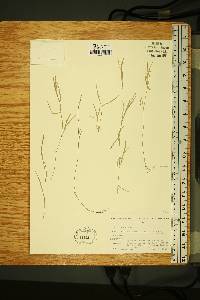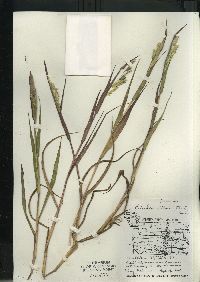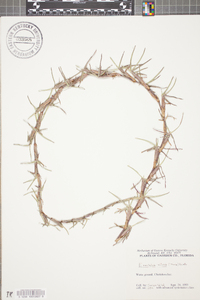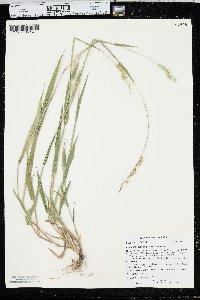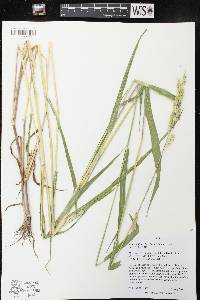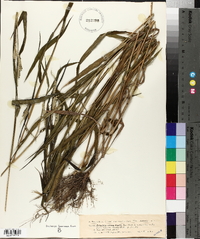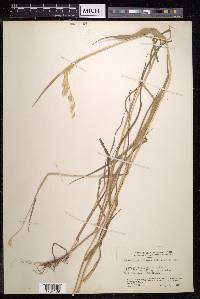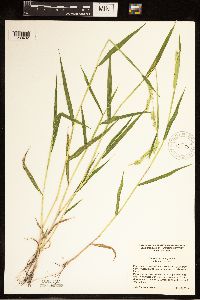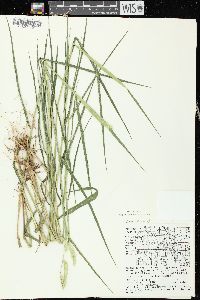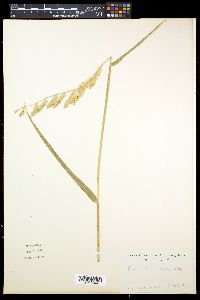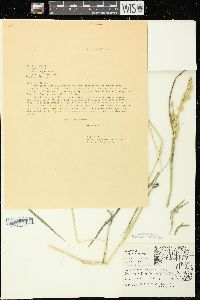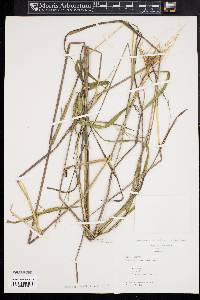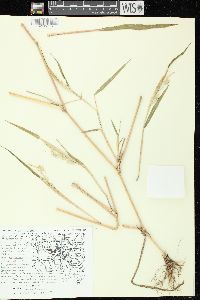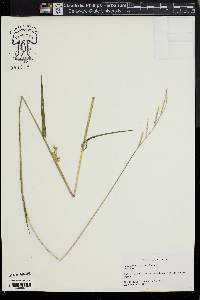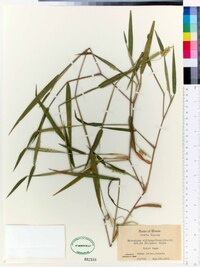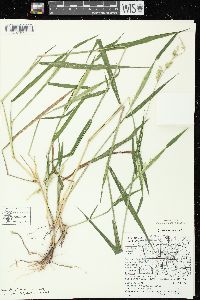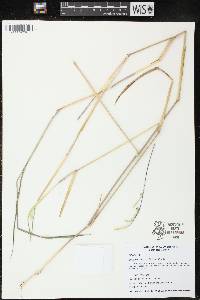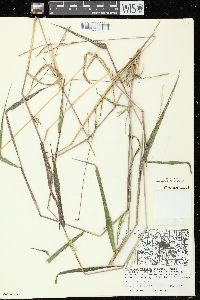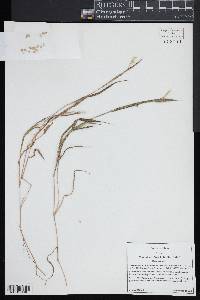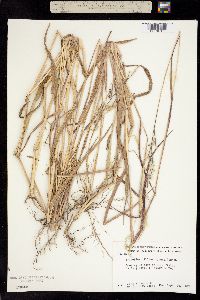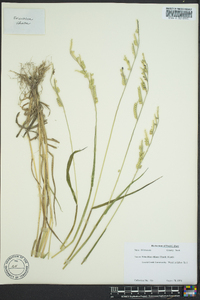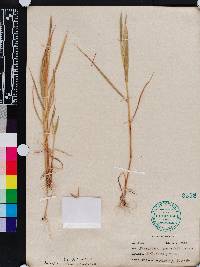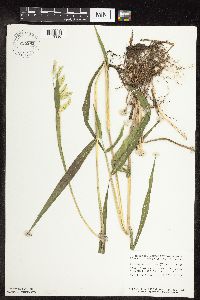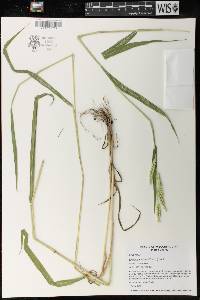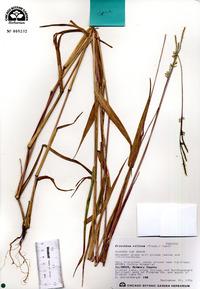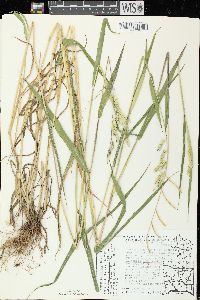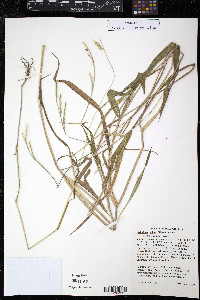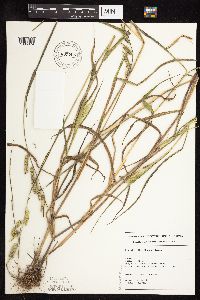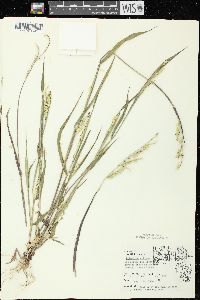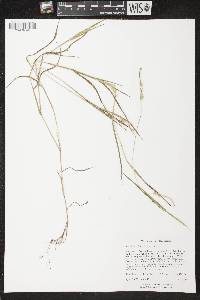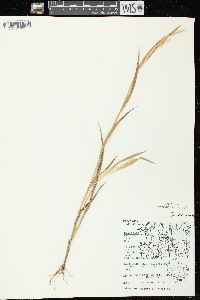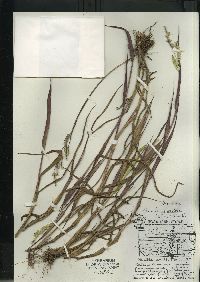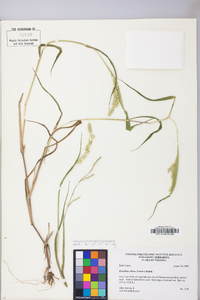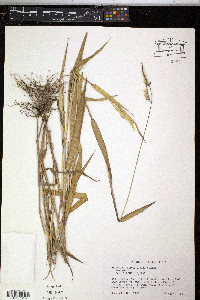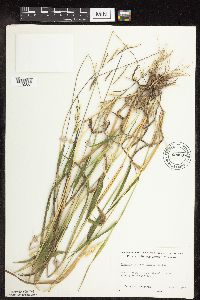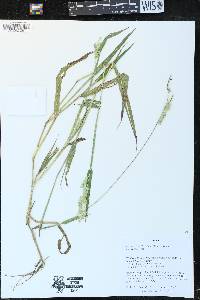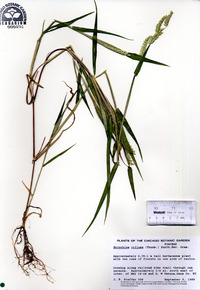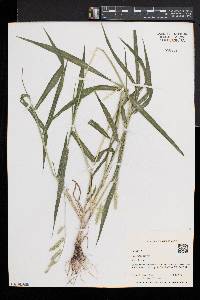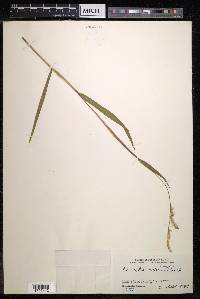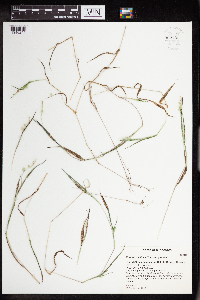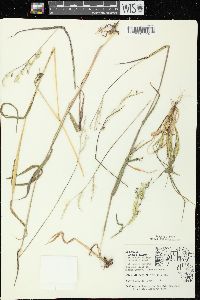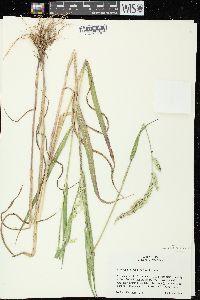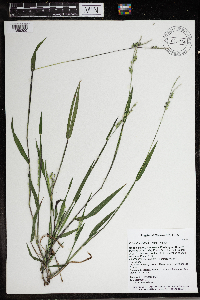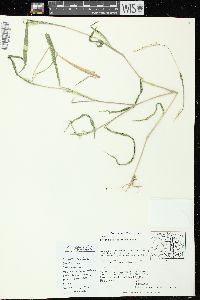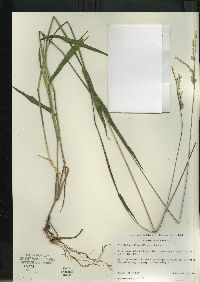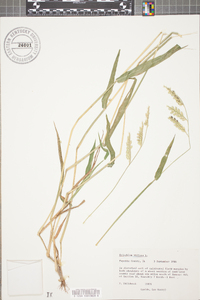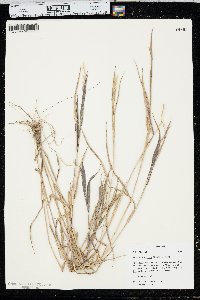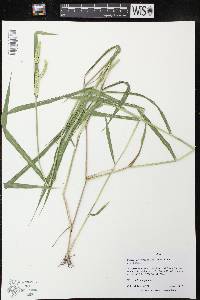
|
|
|
|
Family: Poaceae
Hairy Cup Grass, more...Ériochloé Velue
[Helopus villosus (Thunb.) Nees] |
Plants annual. Culms 30-100 cm, erect or decumbent, sometimes rooting at the lower nodes; nodes and internodes pubescent. Sheaths sometimes inflated, glabrous or pubescent; ligules 0.5-1 mm; blades 10-20 cm long, 5-12 mm wide, flat, adaxial surfaces hairy. Panicles 3-16 cm long, 1-3 cm wide; rachises villous; branches 2-8, 20-70 mm long, 0.8-1.1 mm wide, velutinous, sometimes winged, with 11-24 solitary spikelets (occasionally paired proximally); pedicels 0.5-1 mm, densely villous below, often with long hairs intermixed with the short hairs, apices with more than 12 hairs of 1.5-2.5 mm. Spikelets 3.9-5.2 mm long, 2-2.5 mm wide, ovate to elliptic. Lower glumes occasionally present as a scale; upper glumes equaling the lower lemmas, ovate to elliptic, glabrous or pubescent, 7-veined; lower lemmas 3.4-5 mm long, 2-2.5 mm wide, 5-veined, acute to apiculate, unawned; lower paleas absent; anthers absent; upper lemmas 3.5-5 mm, ovate to elliptic, acute to apiculate. 2n = 54. Eriochloa villosa is a weedy species of eastern Asia that has been found at scattered locations in the Flora region Annual herb 30 cm - 1 m tall Leaves: alternate, two-ranked. Sheaths open, sometimes inflated, sometimes hairy. Ligules 0.5 - 1 mm long, membranous, fringed with hairs. Blades 10 - 20 cm long, 5 - 12 mm wide, linear to lance-shaped, flat, hairy above, parallel-veined. Inflorescence: a terminal, branched arrangement of spikelets (panicle), 3 - 16 cm long, 1 - 3 cm wide, spike-like, on an elongate and hairy axis. Branches two to eight, 2 - 7 cm long, to 1 mm wide, sometimes winged, velvety hairy, bearing eleven to twenty-four spikelets. Fruit: a caryopsis, indehiscent, enclosed within the persistent lemma and palea. Culm: upright or decumbent, 30 cm - 1 m long, round in cross-section, sometimes rooting at the lower nodes, sometimes hairy. Nodes two to five. Spikelets: solitary (sometimes paired), stalked, 4 - 5 mm long, 2 - 2.5 mm wide, egg-shaped to elliptic. Florets: two per spikelet. Lower florets sterile. Upper florets bisexual. Lodicules two, papery. Anthers three. Styles two-branched, purple, with feather-like hairs. Stigmas red. Glumes:: Lower glumes sometimes represented as a scale. Upper glumes equal to lower lemmas, egg-shaped to elliptic, seven-veined, sometimes hairy. Lemmas:: Lower lemmas similar to upper glumes in size, shape, and texture, 3.5 - 5 mm long, 2 - 2.5 mm wide, pointed at the apex, five-veined. Upper lemmas 3.5 - 5 mm long, egg-shaped to elliptic with a pointed apex, rounded at the back, hardened, wrinkled, with rolled-up margins. Paleas:: Lower paleas absent. Similar species: No information at this time. Flowering: August to early September Habitat and ecology: Introduced from Asia. Found in disturbed areas such as cultivated fields and along railroads. Occurence in the Chicago region: non-native Etymology: Eriochloa comes from the Greek words erion, meaning wool, and chloe, meaning grass, referring to the usually hairy spikelet axes and flower stalks. Villosa means soft-hairy. Author: The Morton Arboretum Rather coarse, leafy-stemmed annual to 1 m, erect from a decumbent base; lvs flat, 6-15 mm wide, inconspicuously puberulent; racemes several, appressed-erect, 2-5 cm, overlapping, the rachis densely spreading-villous, the short pedicels beset with longer hairs 1.5-3 mm; spikelets borne singly at the nodes of the infl-branches, or paired only at the base, 4.5-5 mm, the second glume and sterile lemma about equal, pointed but scarcely acuminate; fertile lemma obscurely mucronulate or muticous; 2n=54. Native of e. Asia, intr. and becoming established in Ill., Io., Nebr., and Kans. Gleason, Henry A. & Cronquist, Arthur J. 1991. Manual of vascular plants of northeastern United States and adjacent Canada. lxxv + 910 pp. ©The New York Botanical Garden. All rights reserved. Used by permission. |

